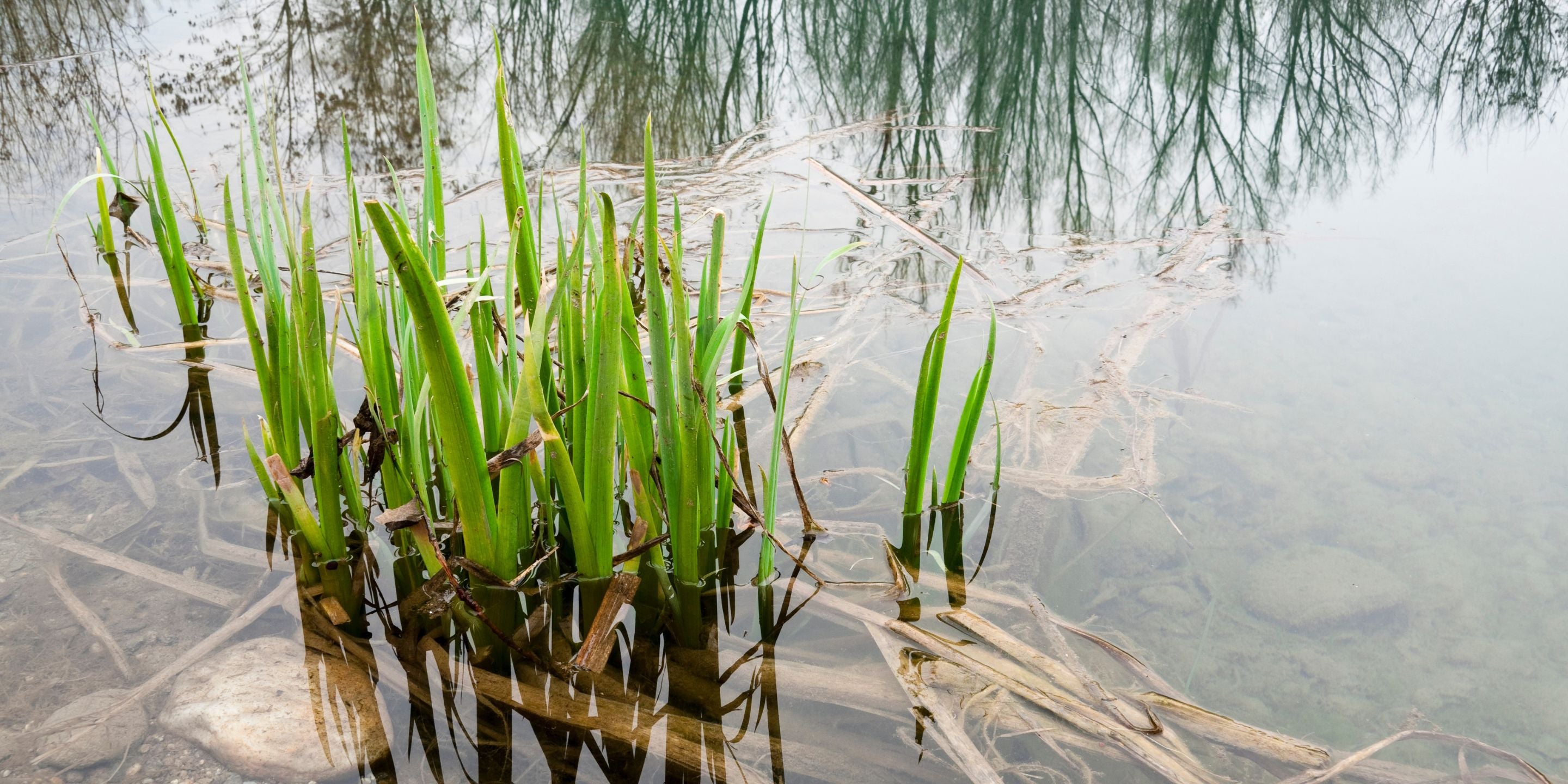Water Biology

Water Biology
Choosing the Right Micro-Organisms for Your Wastewater
Wastewater is generated from many different sources. This waste represents thousands of tons of organic matter. Wastewater treatment is a biological process. A treatment plant is a microbiological zoo that houses bacteria, protozoa, metazoa and other micro life. The micro-organisms do the actual breakdown and removal of nutrients and organic material in the wastewater. They perform best when all their needs are met.
Wastewater treatment is designed to allow the natural process of the breakdown of pollution to occur under controlled conditions. These systems include physical and chemical processes to remove solids and heavier materials. However, left behind is the liquid containing soluble and insoluble organic material. The one process all facilities have in common is the biological treatment of this organic material or “nutrients”. That is, they rely on the use of certain micro-organisms to convert these organic nutrients into materials that are beneficial for the environment. Wastewater contains nutrients of every type; phosphorus, nitrogen, sodium, potassium, iron, calcium and compounds such as fats, sugars and proteins. Micro-organisms use these substances as a “food” source for energy, for the synthesis of cell components, and to maintain life processes.
Many types of micro-organisms can be found in the wastewater treatment system. However, the types of organisms that will dominate will be the ones that are best suited to the “environment” or conditions in the system. Wastewater treatment systems are designed to foster an “environment” that suits a certain type of micro-organism. These micro-organisms not only remove organic wastes from the water, but they also “settle out” as solid material for easy removal. If the right conditions are not present, the wrong micro organisms will dominate. These “wrong” micro-organisms not only interfere with the successful removal of wastes from the water, but they themselves may be difficult to remove from the system. Our approach to wastewater is to provide select bacteria and fungi strains as prepackaged blends along with aeration and oxidation technologies to attack the nutrient loading and water polishing goals of our clients. Here are some brief descriptions of the types and techniques of our biology and oxidation technologies.
Biology and Oxidation Technologies
Facultative Bacteria
Most of the bacteria that absorb the organic material in a wastewater treatment system are facultative in nature. This means they are adaptable to survive and multiply in either anaerobic or aerobic conditions. The nature of individual bacteria is dependent upon the environment in which they live. Usually, facultative bacteria will be anaerobic unless there is some type of mechanical or biochemical process used to add oxygen to the wastewater. When bacteria are in the process of being transferred from one environment to the other, the metamorphosis from anaerobic to aerobic state (and vice versa) takes place within a couple of hours.
Anaerobic Bacteria
Anaerobic bacteria live and reproduce in the absence of free oxygen. They utilize compounds such as sulfates and nitrates for energy and their metabolism is substantially reduced. In order to remove a given amount of organic material in an anaerobic treatment system, the organic material must be exposed to a significantly higher quantity of bacteria and/or detained for a much longer period of time. A typical use for anaerobic bacteria would be in a septic tank. The slower metabolism of the anaerobic bacteria dictates that the wastewater be held several days in order to achieve even a nominal 50% reduction in organic material. That is why septic tanks are always followed by some type of effluent treatment and disposal process. The advantage of using the anaerobic process is that electromechanical equipment is not required. Anaerobic bacteria release hydrogen sulfide as well as methane gas, both of which can create hazardous conditions. Even as the anaerobic action begins in the collection lines of a sewer system, deadly hydrogen sulfide or explosive methane gas can accumulate and be life threatening.
Aerobic Bacteria
Aerobic bacteria live and multiply in the presence of free oxygen. Facultative bacteria always achieve an aerobic state when oxygen is present. While the name “aerobic” implies breathing air, dissolved oxygen is the primary source of energy for aerobic bacteria. The metabolism of aerobes is much higher than for anaerobes. This increase means that 90% fewer organisms are needed compared to the anaerobic process, or that treatment is accomplished in 90% less time. This provides a number of advantages including a higher percentage of organic removal. The byproducts of aerobic bacteria are carbon dioxide and water. Aerobic bacteria live in colonial structures called floc and are kept in suspension by the mechanical action used to introduce oxygen into the wastewater. This mechanical action exposes the floc to the organic material while treatment takes place. Following digestion, a gravity clarifier separates and settles out the floc. Because of the mechanical nature of the aerobic digestion process, maintenance and operator oversight are required.
Filamentous Organisms
The majority of filamentous organisms are bacteria, although some of them are classified as algae, fungi or other life forms. There are a number of types of filamentous bacteria which proliferate in the activated sludge process. Filamentous organisms perform several different roles in the process, some of which are beneficial and some of which are detrimental. When filamentous organisms are in low concentrations in the process, they serve to strengthen the floc particles. This effect reduces the amount of shearing in the mechanical action of the aeration tank and allows the floc particles to increase in size. Larger floc particles are more readily settled in a clarifier. Larger floc particles settling in the clarifier also tend to accumulate smaller particulates (surface adsorption) as they settle, producing an even higher quality effluent. Conversely, if the filamentous organisms reach too high a concentration, they can extend dramatically from the floc particles and tie one floc particle to another (inter floc bridging) or even form a filamentous mat of extra large size. Due to the increased surface area without a corresponding increase in mass, the activated sludge will not settle well. This results in less solids separation and may cause a washout of solid material from the system. In addition, air bubbles can become trapped in the mat and cause it to float, resulting in a floating scum mat. Due to the high surface area of the filamentous bacteria, once they reach an excess concentration, they can absorb a higher percentage of the organic material and inhibit the growth of more desirable organisms.
Aeration in Lagoons
For years, lagoon systems have provided secondary treatment performance to many small to medium sized communities. The attributes of these processes have been attractive as cost effective options for the treatment of municipal wastewater. The aeration segment in these systems is the most critical component and is the core of their biological treatment process. A lagoon systems ability to aerate the incoming sewage has a direct impact on the level of wastewater treatment it achieves.
An ample oxygen supply in a pond system is the key to rapid and effective wastewater treatment. Oxygen is needed by the bacteria to allow their respiration reactions to proceed rapidly. The oxygen is combined by the bacteria with carbon to form carbon dioxide. Without sufficient oxygen being present, bacteria are not able to quickly biodegrade the incoming organic matter. In the absence of dissolved oxygen, degradation must occur under septic conditions which are slow, odorous and yield incomplete conversions of pollutants.
The designers of lagoon and wastewater systems must take into account the fate of the biological cells, called sludges, that would eventually settle to the pond's bottom. One advantage to using an aeration system to treat wastewater is the lack of sludge volumes that require treatment. Unlike conventional wastewater treatment plants that must remove excess sludges daily, a pond type system can go from ten to twenty years without ever needing cleaning. This is because, in the presence of sufficient oxygen, bacterial cells that settle to the ponds bottom are eventually biodegraded into carbon dioxide and inert materials. Since a large portion of municipal wastewater consists of biodegradable organic carbon matter, much of the settled sludge in the lagoon can be quickly decomposed by the remaining active bacteria. If sufficient oxygen is not present in the ponds, the sludge layer will accumulate faster than it can be biodegraded.
Clearly the proper aeration and mixing of a lagoon is critical to properly treat the influent pollutants. The proper oxygenation of a treatment system also has important implications for plant toxicity. The typical ammonia concentration of raw sewage is 30 ppm. This ammonia is present as a natural consequence of the degradation of protein-based compounds in wastewater. Ammonia has been found to be toxic to aquatic organisms.
Both coarse and fine bubble diffused aeration systems transfer oxygen into the water by creating small bubbles. As the bubbles travel through the water, oxygen is transferred across the bubble's surface and into the water. Mechanical aerators work in the opposite way by creating small droplets of water using a mixer. These droplets are propelled through the atmosphere above the ponds surface. Oxygen in the air is transferred into the small water droplets which then fall back into the water.
The maximum amount of oxygen that water can hold at 20 degrees Celsius is 9.09 ppm. As the water temperature increases in the summer months, lesser concentrations of oxygen can be held by the warmer water.
Whether it be a plant upgrade or a new facility, a lagoon system will not work well without proper aeration. As sludge disposal regulations become stricter and disposal sites become scarce, proper aeration will reduce the amount of solids that may have to be removed from lagoons since more of the incoming pollutants will be oxidized.

